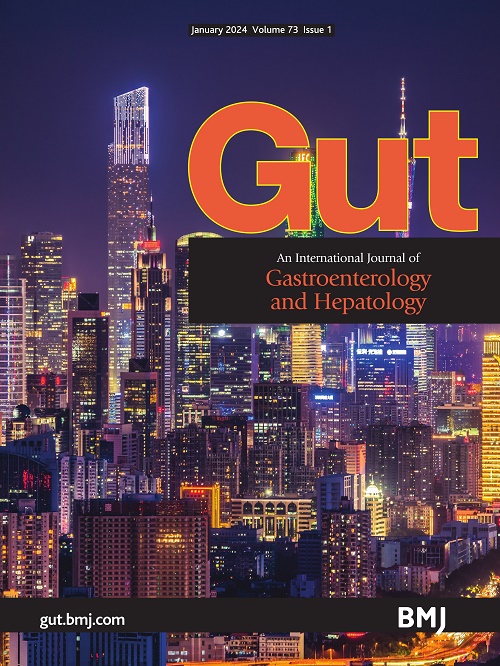扩展炎症类特征,预测肝细胞癌中基于免疫检查点抑制剂的联合疗法
IF 23
1区 医学
Q1 GASTROENTEROLOGY & HEPATOLOGY
引用次数: 0
摘要
最近,Montironi 等人1 的一项最新研究引起了我们的兴趣,他们在研究中发现,肝细胞癌(HCC)患者中的炎症亚类与对免疫疗法的反应有关。作者使用 20 个基因特征来区分这些患者,并进一步发现炎症亚类和非炎症亚类在体细胞水平上的免疫浸润不同。我们对作者开展这项具有重要临床意义的研究表示赞赏。我们还注意到,Li 等人 2 在另外两个来自接受抗 PD1 治疗患者的 RNA-seq 数据集中验证了炎症等级的预测价值。3-6 在这里,我们首先对参加 GO30140 Ph1b 和 IMbrave150 PhIII 试验的 289 例接受抗 PD-L1 和抗 VEGF 联合治疗的患者的 RNA-seq 数据进行了无监督聚类7(图 1)。结果表明,与 B/浆细胞和成纤维细胞相关的基因高表达的亚类(C1)的炎症级评分更高,疗效更好(图 1B-D)。炎症级基因特征在预测联合治疗反应方面的表现显示,在...本文章由计算机程序翻译,如有差异,请以英文原文为准。
Extending inflamed-class signature to predict immune checkpoint inhibitor-based combination therapy in hepatocellular carcinoma
Recently, we were intrigued by a recent study by Montironi et al ,1 in which they discovered that an inflamed subclass in hepatocellular carcinoma (HCC) patients is associated with a response to immunotherapy. The authors used a 20-gene signature to distinguish these patients and further found different immune infiltration between inflamed and non-inflamed class at the bulk level. We commend the authors for undertaking this study, which holds significant clinical implications. We also observed that Li et al 2 have validated the predictive value of inflamed class in two additional RNA-seq datasets from patients who received anti-PD1 therapy. However, the use of combination immunotherapy, which includes dual immune checkpoint inhibitors or is combined with anti-VEGF agents, has become a growing trend in HCC.3–6 Here, we first performed unsupervised clustering on the RNA-seq data from 289 patients enrolled in the GO30140 Ph1b and IMbrave150 PhIII trials who received a combination of anti-PD-L1 and anti-VEGF therapy7 (figure 1). The results indicated that the subclass (C1), which exhibited high expression of genes associated with B/plasma cells and fibroblasts, had a higher inflamed-class score and better therapeutic efficacy (figure 1B–D). The performance of inflamed-class gene signature in predicting combination therapy response showed anarea under …
求助全文
通过发布文献求助,成功后即可免费获取论文全文。
去求助
来源期刊

Gut
医学-胃肠肝病学
CiteScore
45.70
自引率
2.40%
发文量
284
审稿时长
1.5 months
期刊介绍:
Gut is a renowned international journal specializing in gastroenterology and hepatology, known for its high-quality clinical research covering the alimentary tract, liver, biliary tree, and pancreas. It offers authoritative and current coverage across all aspects of gastroenterology and hepatology, featuring articles on emerging disease mechanisms and innovative diagnostic and therapeutic approaches authored by leading experts.
As the flagship journal of BMJ's gastroenterology portfolio, Gut is accompanied by two companion journals: Frontline Gastroenterology, focusing on education and practice-oriented papers, and BMJ Open Gastroenterology for open access original research.
 求助内容:
求助内容: 应助结果提醒方式:
应助结果提醒方式:


